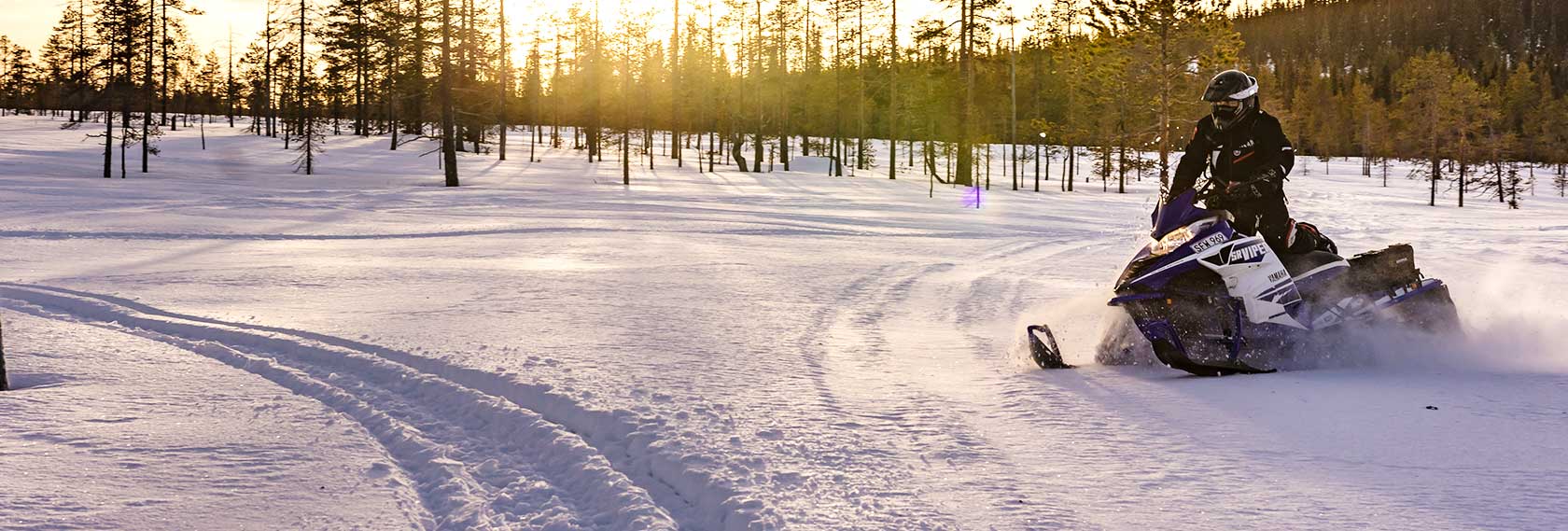

As with most, our club dreams of grooming the trails with a brand new Tucker, or possibly a Pisten Bully. Then we wake up and remember that we don’t have a trail system capable of handling such a large piece of equipment. But that is not to say that we can’t go larger than our current snowmobile-based groomers. With a limited amount of medium-sized groomers being built by the factories, smaller clubs with smaller trails must become creative and build their own small-tracked groomers. Such was the case with our club. So, if your club is interested in building a tracked groomer, this article will give you some of the “do’s and don’ts” in the building process.
What should we start with? First and foremost is choosing a power unit. Research, research and do more research. This is the most time consuming part of building a power unit. Several things must be taken into consideration. What size can your trail system handle? You must think of your entire trail system, not only the width of your trails, but also the width of your bridges and how much weight they can handle. If your bridges and trails are not wide enough, how willing are you and your club to make the necessary changes. This could possibly be the biggest challenge and commitment. Our club chose a 1991 Suzuki Carry KEI class mini-truck. This truck fit our needs quite well. 1700 lbs and a width of 4.5ft without the tracks installed. This made it possible to upgrade to a 6.5ft-wide drag with minimal trail changes. We did have to change some bridges, but we had already started that upgrade as we replaced old bridges several years ago.
What kind of tracks should we use? There are several companies that build tracks for all kinds of vehicles. The best thing is to talk to as many people as you can to decide what track is right for you. You need to know if you can get repair parts quickly and easily. Will the set you want handle the weight of your power unit? How easy are the tracks to install and remove if you plan on taking them off in the summer. After talking to several different clubs we chose Tatou 4S tracks for our mini-truck. We found that they made a set of hub plates that in theory should bolt up to the truck.
Time to assemble. We decided to start by installing the rear tracks first. We removed the rear wheels and mud flaps so that they didn’t get wrapped up in the tracks. Jack up your vehicle just enough so that you can just slide the track plates over the studs. Next would be to snug the lug nuts onto the adapter plates and check for tracks rubbing on any suspension pieces. We found that the tracks were rubbing slightly on the rear spring shackles. So off with the tracks, a quick installation of a 4mm shim, and they were ready. The fronts go on quite similarly, but with one exception: the front tracks have a lot more movement up and down as well as side to side. It is crucial that you make sure you have plenty of clearance up and down and side to side. You don’t want to spit off a track at midnight while towing a drag behind you.
Next step is to install the anti-rotation bars in the front and rear. These bars prevent the track from flipping over if the track becomes airborne while going over something. Most kits are vehicle specific, and these mounts will go on without a hitch. We had to modify ours to get them on. Most crucial is that the front mounts must be directly under the lower balljoint. Once mounted, you’ll need to check the alignment in the front and rear, adjust the track tension and you are ready to try. Very important: keep up with track tension: loose tracks are the main cause of tracks coming off.
So how did it go? Being a person who is sometimes skeptical, I was anxious to give them a try. Well let me tell you, these tracks do everything and more. Never once did I feel like it was slipping or wanted to slip (we did stud the tracks, though). They made pulling a much heavier drag very easy and quite frankly, effortless for the mini-truck. Best news of all, we use 1/3 of the fuel that we use with our Skandics! Yep, that’s right 1/3 of the fuel. So if any club is interested in building a power unit, don’t be afraid to ask a lot of questions and research, research, research.
Jeff Miller is SAM treasurer and a member of the BGL Club.